Care Sheet
Golden Greek Tortoises (Testudo Graeca)
• Housing & Caging:
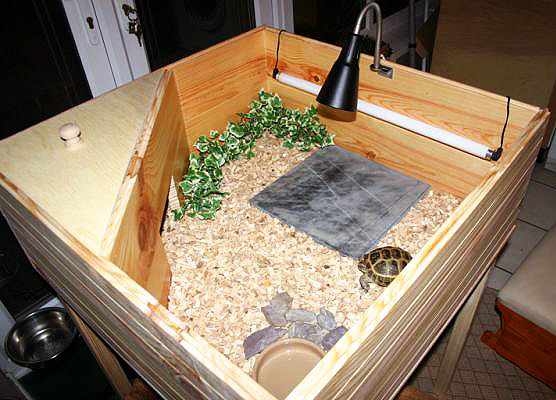 Housing Greek tortoises outdoors in a naturalistic pen is always best. During the warmer part of the year, they can be kept in spacious enclosures that are well planted with edible vegetation and receive plenty of time in natural, full sun.
Housing Greek tortoises outdoors in a naturalistic pen is always best. During the warmer part of the year, they can be kept in spacious enclosures that are well planted with edible vegetation and receive plenty of time in natural, full sun.
Indoors, the construction of a “tortoise table” will suit the needs of Greek tortoises well. A 3-by-6-foot unit made of ply wood will suffice for a single adult and up to a pair of adults. Wood is always recommended over plastic or glass so that the tortoises cannot see through their enclosure’s walls. This way they will learn their boundaries and it will lessen their attempts to escape.
If you have the space, always make the tortoise pen as large as you can. This allows for a more natural behavior cycle and reduces stress, especially from territorial or aggressive specimens. Housing males together may pose a problem with them fighting relentlessly, especially when females are present. It’s important to give the tortoises as much space as possible because they could be spending months on end indoors, until the weather outside is once again appropriate for keeping the tortoises outdoors.
• Lighting, Temperature and Humidity:
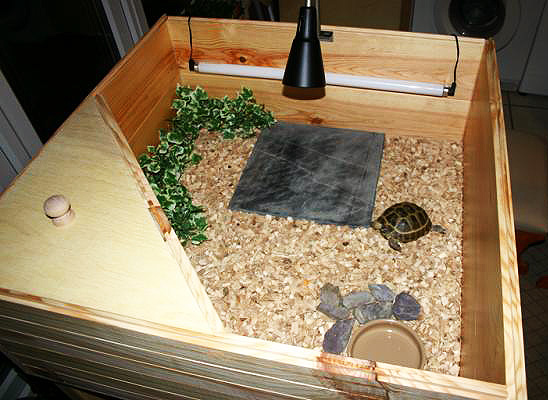 As always, natural sunlight should be utilized whenever possible and the tortoises fully benefit in many ways from being exposed to it. When housing them inside, proper lighting is essential for keeping them healthy. Many options are available to us today such as daylight spot bulbs, infrared heat bulbs, fluorescent tube lighting and ceramic heat emitters. Mercury vapor bulbs which provide both UVA and UVB are a personal favorite of mine. A 100-150 watt vapor bulb is installed on one end only of the indoor unit and this makes for a perfect basking area. It also lights up the enclosure nicely. The opposite end should remain cool. You can also use a regular spot light for the basking area so long as it reaches a temperature of 95-100F. In this case, a fluorescent UVB emitting bulb will need to be installed as well. The ambient room temperature should remain between 75 and 85F. When raising hatchlings, a humidity level of between 65 and 70% is appropriate. This can be achieved by spraying down the enclosure every other day with warm water. A water dish in combination with a substrate that retains humidity well such as 50/50 top soil-play sand mix or cypress mulch does the trick as well. By keeping the babies well hydrated and at a sufficient humidity level, they will grow smoothly and keep good weight.
As always, natural sunlight should be utilized whenever possible and the tortoises fully benefit in many ways from being exposed to it. When housing them inside, proper lighting is essential for keeping them healthy. Many options are available to us today such as daylight spot bulbs, infrared heat bulbs, fluorescent tube lighting and ceramic heat emitters. Mercury vapor bulbs which provide both UVA and UVB are a personal favorite of mine. A 100-150 watt vapor bulb is installed on one end only of the indoor unit and this makes for a perfect basking area. It also lights up the enclosure nicely. The opposite end should remain cool. You can also use a regular spot light for the basking area so long as it reaches a temperature of 95-100F. In this case, a fluorescent UVB emitting bulb will need to be installed as well. The ambient room temperature should remain between 75 and 85F. When raising hatchlings, a humidity level of between 65 and 70% is appropriate. This can be achieved by spraying down the enclosure every other day with warm water. A water dish in combination with a substrate that retains humidity well such as 50/50 top soil-play sand mix or cypress mulch does the trick as well. By keeping the babies well hydrated and at a sufficient humidity level, they will grow smoothly and keep good weight.
• Watering:
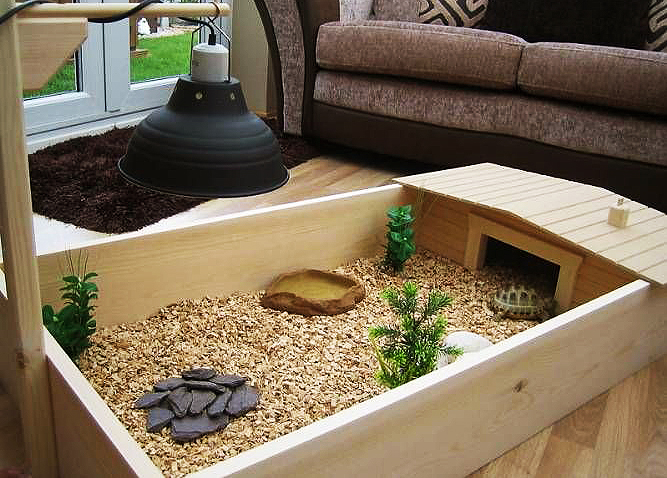 Many Greek tortoises originate from extremely arid habitats while others are found in more temperate locations. Regardless of their origin, all Greek tortoises need to stay hydrated. A shallow water dish should be available at all times for drinking and soaking, and it should be cleaned / changed frequently. Tortoises defecate in their water, so keeping the supply clean is a must. Greek tortoises also appreciate an occasional misting of their environment, which prompts them to empty their bowels and drink.
Many Greek tortoises originate from extremely arid habitats while others are found in more temperate locations. Regardless of their origin, all Greek tortoises need to stay hydrated. A shallow water dish should be available at all times for drinking and soaking, and it should be cleaned / changed frequently. Tortoises defecate in their water, so keeping the supply clean is a must. Greek tortoises also appreciate an occasional misting of their environment, which prompts them to empty their bowels and drink.
Use small water dishes called “chick waters.” About 8 inches in circumference, they have a 2-inch-wide and 1-inch-deep water-access slot to offer the tortoises water. One to two days at most per week, these are placed in each pen, and they are removed at the end of the day. Tortoises can dip their heads into the water for a drink, but they can’t climb in and defecate into or spill the water. Recommended once every two weeks to remove tortoises from their pens and given a supervised 15-minute soak in a bathtub filled with 1 to 2 inches of warm water. Even with this infrequent access to water, they rarely choose to actually drink more than once per month.
• Feeding:
Golden Greeks generally won’t seek out or consume ani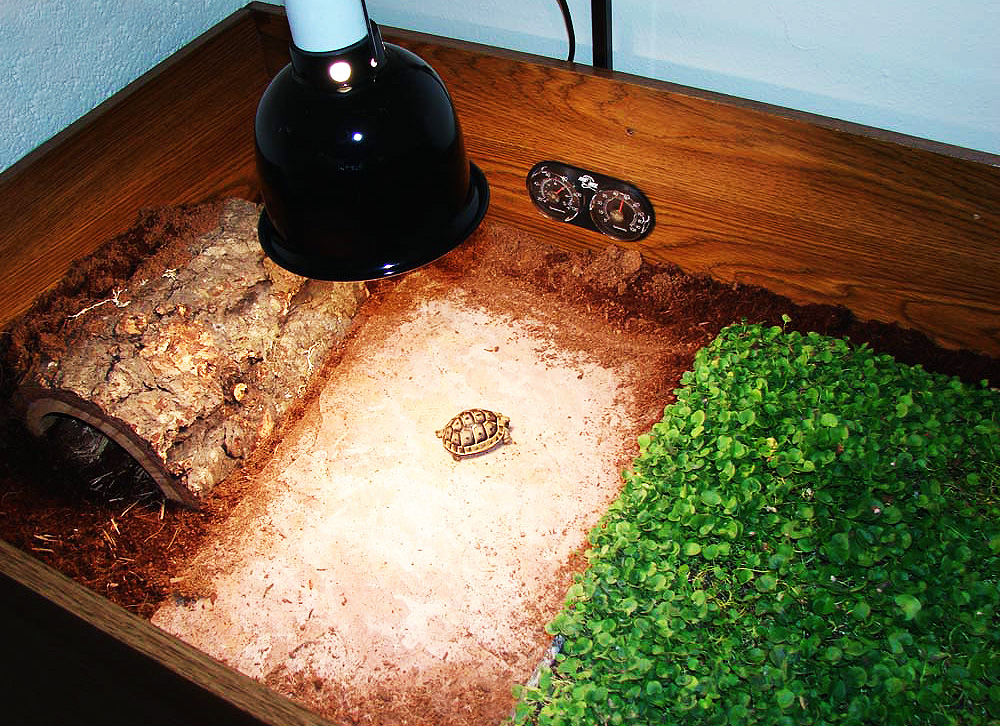 mal-derived proteins, Greek tortoises spend much of their time gazing on edible landscape. For this reason, it is an excellent and healthy idea to offer weeds such as Dandelion, clover, plantain, cat’s ear, and live grasses such as Bermuda & timothy, fresh fruits such as wild strawberry, and thistle. When these items are not available like during the winter months, they can be replaced by dried, bagged organic herbs. These can be found online. Store bought greens like collards, mustards, kale, endive, bok choy, various Lettuce Leaves make, a good base diet, and turnip can be offered sparingly, opuntia cactus pads, raw shredded squash and chopped peppers are excellent additions. Commercial diets such as Mazuri are excellent for helping the tortoises maintain good weight but again should be offered only in moderation.
mal-derived proteins, Greek tortoises spend much of their time gazing on edible landscape. For this reason, it is an excellent and healthy idea to offer weeds such as Dandelion, clover, plantain, cat’s ear, and live grasses such as Bermuda & timothy, fresh fruits such as wild strawberry, and thistle. When these items are not available like during the winter months, they can be replaced by dried, bagged organic herbs. These can be found online. Store bought greens like collards, mustards, kale, endive, bok choy, various Lettuce Leaves make, a good base diet, and turnip can be offered sparingly, opuntia cactus pads, raw shredded squash and chopped peppers are excellent additions. Commercial diets such as Mazuri are excellent for helping the tortoises maintain good weight but again should be offered only in moderation.
In all diet, augment with Calcium & Multivitamins (Specifically D3 & Some A), this is especially important in fast growing, hatchlings, juveniles and in ovulating females, all of which are actively metabolizing calcium.
Tortoises tend to be most active early in the day and late in the afternoon, so offer their food early in the day if possible. It is recommended to dust the greens daily with a very light sprinkling of a calcium-mineral mix, and weekly with a tortoise-specific vitamin mix. It is also recommended to spray greens with water to keep them fresh before feedings.
Kindly Visit Turtle Chef for more information about healthy diet, needed & recommended green leaves, vegetables & fruits for your pet tortoise.
• Handling &Temperament
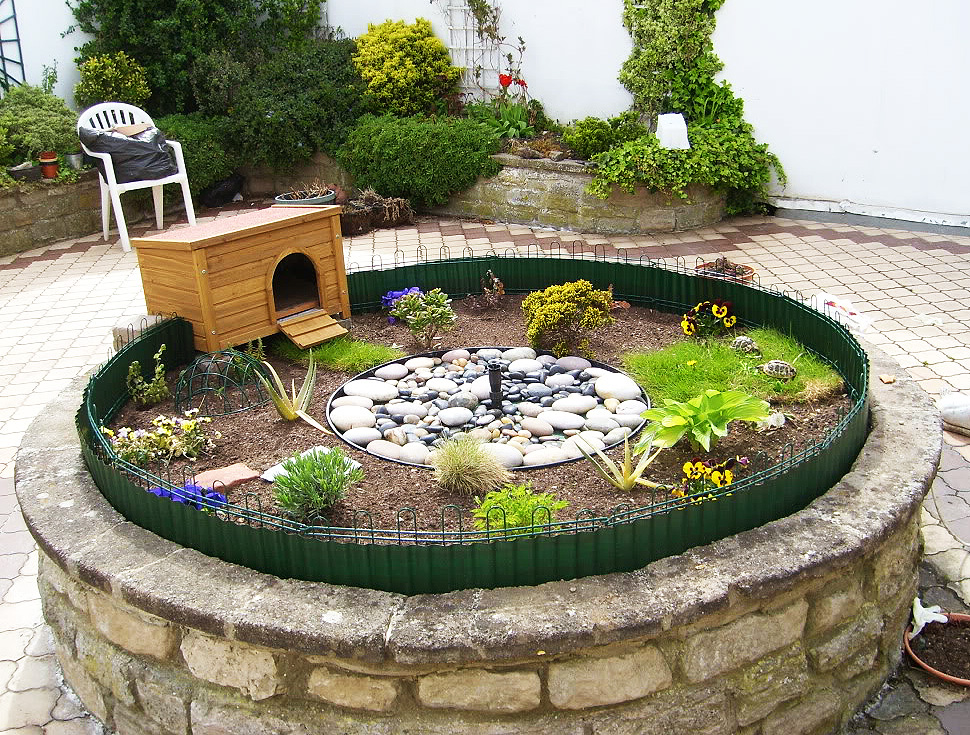 As with any turtle or tortoise, Greeks do not like to be held. By nature, these tortoises are low to the ground therefore; they should be picked up when absolutely necessary. Soaks, cleaning of the enclosure and health checks are reasons for handling. While they tend to become very responsive to their keepers and will approach you for food, they should not be over-handled by any means. They are an easy-going, friendly and interactive species but like all reptiles, should never be overly stressed.
As with any turtle or tortoise, Greeks do not like to be held. By nature, these tortoises are low to the ground therefore; they should be picked up when absolutely necessary. Soaks, cleaning of the enclosure and health checks are reasons for handling. While they tend to become very responsive to their keepers and will approach you for food, they should not be over-handled by any means. They are an easy-going, friendly and interactive species but like all reptiles, should never be overly stressed.
• Life Span
Testudo Graeca are known to be some of the longest lived of the tortoises. Reports suggest well into the 100s. In the wild, many do not live passed the age of twenty due to predation and other factors. When kept safe and under optimum conditions, they thrive and can live to a ripe old age. Some have outlived their keepers.
• Pet to Appreciate
 Although the golden Greek tortoise is still relatively uncommon in captivity, captive-born hatchlings are beginning to show up more regularly on online reptile dealer websites and at trade shows. Slowly but surely they are gaining a foothold in the North American reptile hobby.
Although the golden Greek tortoise is still relatively uncommon in captivity, captive-born hatchlings are beginning to show up more regularly on online reptile dealer websites and at trade shows. Slowly but surely they are gaining a foothold in the North American reptile hobby.
If properly cared for, these golden tortoises make a long-lived and rewarding companion animal. The brighter morphs can be truly stunning, and most individuals are very personable, social creatures.

|
Ideas For Tortoises Caging
Indoors & Outdoors
|